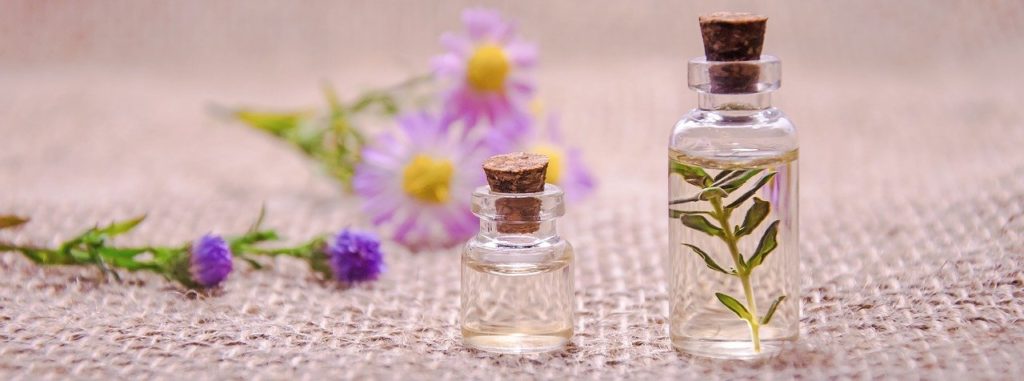Fragrance and Flavor industry accounts for one of the key market segments within India. Since ancient times, India has been a land of olfactory indulgence, with aromatherapy, incense, and ittar. The ancient royal lore included essential oil perfume. The medicinal scents introduced by Ayurveda were the first to be used. Aromatic herbs and fragrant plants were recommended for mental well-being, appearance, illness care, hygiene, and other purposes. With the advent of technology and increased use, India’s conventional fragrance industry has undergone significant changes in recent years. In terms of production and consumption, India has one of the largest fragrance and flavor industries in the world. The fragrance and flavor industry is expected to expand in the coming years, providing numerous opportunities for new entrants.
Perfumery was a flourishing industry in many civilizations, including India. Traders from all over the world came here looking for the best scents. This once-thriving fragrant company eventually lost its allure. This was mostly due to the average people’s hectic lifestyles and waning desire to groom themselves. However, considering recent developments in the lifestyle industry, as well as the increasing demand for grooming, the Indian fragrance industry is expected to witness massive growth in the coming few decades.
The fragrance industry is one of the world’s fastest-growing industries. Personal care and cosmetics have a vibrant market presence in India. The fragrance and flavor industry is worth $500 million, a small portion of the $24 billion global markets. India, however, is not only a growing consumer market but also a significant exporter of fine fragrance raw materials. India is the world’s largest supplier of mint, apart from jasmine and sandalwood. India also provides ingredients for all types of perfumery, including florals like geranium, spices like pepper, woods like agar, and grasses like vetiver. The Indian fragrance market is expected to be valued at USD 1812 million in the year 2024. This segment of the chemical industry is projected to expand at a compound annual growth rate (CAGR) of 15.93%. This growth can be attributed to the rising personal care, increasing disposable income, and growing demand in middle-class people.
Market Segment
The fragrance products market is divided into three types: perfumes, deodorants, and other fragrance products. Deodorants had the highest sales share of 60.65% in 2019, followed by perfumes with 32.14%. Due to its affordability, deodorant is the most used fragrant product in the world.
Fogg, Nivea, Engage, Park Avenue, Axe, etc. are some of the most well-known fragrance brands in India. In 2019, Fogg had the highest market share of 15.8%. This was followed by Nivea and Engage with 11.6% 10.8% share, respectively.
Impact of COVID-19 on the fragrance industry
The overall growth of fragrances slowed in 2019, owing to a slower adoption in volume terms as customers invested in higher-end fragrances. Premium fragrances saw an increase in sales in 2019, while mass fragrances saw a disappointing decline, weighed down by underperforming celebrity fragrances.
As a result of the COVID-19 pandemic, all fragrance types are projected to see slightly slower growth in market value sales at constant 2019 rates in 2020 than the previous year. Premium fragrances, especially premium men’s fragrances, will see the steepest declines in both volume and value sales at constant 2019 rates. The fragrances group is expected to rebound in 2021, following a drastic drop in market value sales at constant 2019 prices in 2020 as a result of the COVID-19 lockdown and increased economic uncertainty.
The Indian players
Menthol Mint was first introduced in India in 1954, and since then, various variants have been produced by CSIR-CIMAP. Several extension works have been carried out by various organizations, including FFDC Kannauj. Kannauj’s FFDC formed a partnership with MCX in 2007 to analyze mint oil for forward trading. With nearly 90% of total global production and nearly 40,000 tons of oil, India has become the global leader in Mint oil. Uttar Pradesh contributes 80% of India’s total production, while Bihar contributes 13% and Madhya Pradesh contributes 7%.
Since 1992, Jasmine Concrete Exports Pvt. Ltd, based in Chennai, has been producing jasmine grandiflorum essence, absolute, and concrete. Flowers are used to produce concrete, which is then treated to extract excess waxes and yield absolutes, which are one of the fragrance ingredients. The company is currently the largest producer of jasmine grandiflorum with a nearly 30% share in the global market. Jasmine Concrete Exports Pvt. Ltd. chose land near Coimbatore as it is a dry belt, suitable for growing jasmine.
Plant Lipids, based in Kochi, is also a leader in sustainable practices as one of the world’s largest suppliers of supercritically extracted plant extracts. India has emerged as a major player in naturals for the fine fragrance industry in the last ten years. The company supplies essential oils and extracts to the top 4 in the industry: Firmenich, Givaudan, Symrise, and International Flavours & Fragrances (IFF).
India’s fragrance export market had been rapidly expanding. Tajul Bakshi established Assam Aromas in Nagaon, Assam, in 1999. All over the North-East, the business produces high-grade agarwood oils from mature wood branches with older, more valuable resin.

